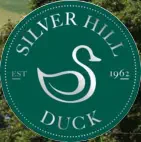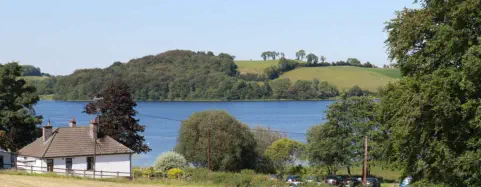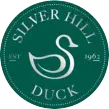
All Content Copyright emyvale.net
Emyvale Then And Now
The following cutting from the Northern Standard of 21st April 1961, and printed here with their
permission, was sent to me by Ms. A. O’Hagan and we think that some of the older generation
from around Emyvale will find it interesting but the younger generation should be interested too
and compare then with now.
Emyvale Then and Now.
The returned exile might be surprised on entering Emyvale from the Monaghan Road. The old
stone bridge, which weathered the storms and floods of centuries, has been replaced by an up-
to-date metal one. Some might have nostalgic memories as the old Bridge was a meeting place
for ‘the boys’ of the village. Here they were wont to plan different kinds of activities, some good
and some not so good.
The top of the bridge was flat and made an excellent seat. It was a kind of forum for the older
members of the community. One old man usually started off “I was reading in the paper etc” and
the subject was thrown open for discussion. Going ‘up the town’, Scarna or Sgairbh Na
Geaorach, to give it its full ancient name, presents a very different picture to that seen at the
beginning of the century. Many fine houses have been built and pretty bungalows take the place
of the old thatched houses. These were mostly one-storey high with small windows. Some had a
half-door over which the inmates could lean and watch the world go by.
There was often a stone outside the door and a very comfortable seat it was on a Summer’s
evening.
To return to the present. A bus now runs daily between Emyvale and Monaghan. In the old days
the jaunting cars went to Monaghan very Monday. They were simply loaded down with
passengers and baskets of eggs and butter. The jaunting car reminds me of my first entry into
Emyvale. I would be about nine years old and a most terrifying experience it was sitting on that
jaunting car from Glasslough to Emyvale, holding on to the ‘dicky’ for dear life and expecting to
be thrown onto the road every minute.
Frank the Baron’s Hill stands sentinel on the east side of the town. It was the scene of many a
bonfire in the days of yore. By the way, Frank the Baron, whose real name was McKenna,
claimed that his great great grandfather was a baron on the Leslie estate. There were many
interesting characters in Emyvale 50 or 60 years ago. Margaret the apple woman lived in a little
house almost opposite to where the present Town Hall now stands.
She attended fairs and markets with a great basket of gooseberries or apples. She kept a basket
of gooseberries near the door and one could get a half-pint tinful for a half-penny. Running to the
pump for a can of water meant good measure. Nearby live Ned the showmaker. He always
dressed up on Sunday, white waist-coat, soft hat tilted over one eye and boots polished to
perfection. Paddy the creel maker lived further up. He had been in Glasgow in his youth and
‘wrought’ at the Town head. Paddy never married and for this reason. He couldn’t thole the smell
of bacon much less the taste. He was afraid if he brought in a wife she might start to fry bacon
and that would be the end of Paddy’s peaceful existence.
But the most outstanding character was Alec – he did odd jobs about the town. One side line
was bisom making. He’d start off about five o’clock on a Summer’s morning. Out over Curthein,
which always gave him an appetite, so he said, and on to the mountains. Here he would gather a
great load of heather, get it on to his back and start for home, a distance of four or five miles.
He’d stop to rest at several houses and was always welcome, as he was considered the best
storyteller in the country. Back in Scarna he’s start to make the bisoms. On Monday he’s take a
load on his back, and walk to Monaghan, a distance of six miles. Here he’d sell the bisoms for a
penny or twopence each.
Alec’s house was a rendezvous for all interested in the art of storytelling. One night a crowd
gathered in and one man told about a wonderful fish he caught in Lough Neagh. I don’t
remember how long it was but it was beyond anything ever heard of. “Ah” says Alec, “that’s
nothing. I mind one time I went out to Emy Loch to fish. I threw out the line and waited. It wasn’t
very long till I got a bite and I pulled in but begob I was nearly pulled off my feet into the water. I
managed at last to get the fish out, and a powerful one it was. Me wee terrier was running round
the fish and if it didn’t open its big mouth and swallowed her.
“ Well a while after I went down to Emy to try me luck again. I threw in the line, got a bite and
then the tussle began. The big fish pulled me up and down the bank but I hung on and at last got
it out of the water. Then I out with me knife and ripped it up the middle. Out jumped the terrier
and three pups and do you know what I’m going to tell you, if it hadn’t been for the mother the
pups would have ate me”.
Market house lane is still to be seen round from the Post Office. In days gone by a Fair was held
in Scarna but there was so much fighting and brawling it was discontinued. I cannot vouch for
the truth of this story. There was a very old house where the dispensary now stands. It belonged
to the Neills. The last owner told me the following story. Two brothers and a sister of the Neill
family were living there in the early part of the last century. They were in the habit of sitting up
very late. One night a knock came to the door. John, the elder brother, opened it and there stood
a traveller. He asked if he might come in and wait for the stage coach which passed through the
town early in the morning. John said “Surely” and soon the man was sitting at the fire warming
himself. He was badly in need of food and rest and Margaret, the sister, gave him some supper.
As he ate, he said he was a priest. The Neills took his word for it and they made up a bed for him
by the fire. When their guest was asleep the Neills noticed his boots were badly worn and as they
were shoemakers they fell to and soled them. Margaret washed and mended his socks, which he
had hung up to dry. When the priest awoke in the morning he was more than grateful and went
on his way refreshed and rested.
The Glasslough road brings memories of Spring time when the ditches were covered with
primroses. I still recall the thrill of finding a robin’s nest in a bush hear the river.
In Summer the wild rose ran riot and the sweet-scented woodbine was a delight especially after
rain fell.
The great attraction for children was the broad river. In Summer it was almost dried up, and
easily crossed. The girls spent happy hours making houses under the hawthorn bushes while
the boys went further up the river to try their luck at fishing for sticklebacks. There was a
wishing stone on the far side of the river. The girls usually paid it a visit. The procedure was –
kiss the stone and make a secret wish. The number of wishes was restricted to three.
The ‘Wood’ is a short distance from the town and a very beautiful spot it is in Summer time. It
once formed part of the Anketell estate. The river flows through from the Bragan Mountains on to
the town on its way to the Blackwater. The ladies bathing pool is still to be seen. A great tree
overshadows the river here and it certainly was an ideal place to bathe in on a hot Summer day.
Half way between the wood and the town, at a fork in the road, there stood an old house at the
beginning of the century. The Ogilvey family lived here. It was the wash-house for the Anketells.
The old tubs were unearthed when the present owner was rebuilding.
The Anketells have long since disappeared. The estate, like so many more, has been divided up
among the tenants.
Yes, Emyvale, or Scarnageera, has certainly changed since the day, when a beggar, who had not
fared very well in the town, looked back as he crossed the bridge and exclaimed:
“Oh Emyvale , sweet Emyvale, if you were as free from sin as you are from male (meal), you’d be
the happy Emyvale.”
Signed by A. Perrett.
It would be great if anyone could add to what is written here by giving more information on the
families mentioned and site of the washhouse, some info on A. Perrett, etc. etc. Let us know if
you can give us any more info and thanks to Angela for sending me this.
There has been quite a response from emyvale.net readers to this article and at the bottom of the
page we will include interesting additional information - scroll down to read the added stories.
Additional information:
From Gerard and Patrick McKenna, via Joe Fields:
Francis ‘Baron’ Mc Kenna, Derrygasson, mentioned in the article, was born abt 1827 and
died there in 1899. He was married to Catherine Mc Kenna born abt 1824 and died in 1904.
Francis and Catherine had two daughters Bridget ‘Baron’ Mc Kenna b.1859 and Mary
‘Baron’ Mc Kenna b.1861. Bridget married Bernard Gormley of the Gate House, Cormeen on
the Rossmore estate in Corracrin in 1880, and, Mary married Felix Fields of Mullaloughan in
1890. Descendants of the Fields family still live in Derrygasson. Also, in the article Francis
claimed that his great great grandfather was a baron on the Leslie estate. According to the
Public Record Office Northern Ireland, on the 7th of July 1733 an Edward Mc Kenna of
Kilfahavon, Co. Monaghan surrendered his lease of lands in Emy to Robert Leslie of Castle
Leslie.
In 1883 Philip Mc Kenna, Drogheda, who claimed descent from Shane of Drumbanagher,
was researching the Mc Kenna’s and met with Edward Mc Kenna of Dernahinch, called “The
Baron” and took down the following information:
Edward Mc Kenna of Dernahinch, “The Baron” aged 50 in ’83 | 1833
Son of Edward who died in 1854 aged | 1772
Son of James who died in 1817 aged 86 | 1731
Son of Patrick who lived at Kilfahavon | 1700
Son of Hugh -------------------------------------- | 1670
Son of Denis or Donohoe ---------------------------- | 1640
Son of Emonn or Edmund ------------------------- | 1610
Son of Ross ------------------------------------- | 1580
Son of Sleight Emonn Buidhe --------- | 1550
Edward of Dernahinch b.1833 married Anne Treanor. They had seven children, Margaret,
Edward, Joseph, Catherine, Sarah, Ellen and Agnes. Margaret married Francis Mc Cormack,
publican, Emyvale and Ellen married Peter Mc Phillips, Monaghan. (Irish Civil Records)
Other references to the ‘Baron’ Mc Kenna’s: Tithe Applotment 1826
Patt Mc Kenna (Baron), Derryellen; James Mc Kenna (Baron) Cavan Cope; Patt Mc Kenna
(Baron), Kilfahavon
National Archives Netherlands: Patrick Baron de MacKenna, Sargent in the Dutch army in
1764 registered as being from ‘Skaranageragh’ and served in the Dutch East Indies
(Indonesia).
Francois Baron de Mackenna, Officer in the Dutch Military 1765.
Edward Baron de MacKenna, ‘Kilvaleven’ (Kilfahavon?), married Jacoba Catharina Keijser
in Groningen in 1762 and married Adriana van Boxtel in Groningen in 1763. He was a
captain in the Prince of Orange grenadiers and served in the Dutch East Indies.
Authors: Gerard Mc Kenna, Patrick Mac Cionnaith; Thanks to Joseph Fields
Packie Hughes: Patrick Phillips better known as Paddy was born 15/12/1880, learned his
trade of shoemaker/cobbler from his father John, living in a white washed cottage which is
where “Gort an Cobelera” is now located in the village. In the late 40’s as a young boy
living opposite his home/workplace, I would spend many evenings in his company,
gobsmacked by his stories of olden times. Relative to your recent extract from the Northern
Standard re. Emyvale, he told me that the ladies from The Castle, (Anketells) up The Line,
would access the Ladies Pool via an underground tunnel of steps. Not sure if this is true or
not or if others have heard the same story. Archeologists wanted !?
(Editor: You have brought back memories of those days when I lived up there beside you
and I also used visit Paddy with his wee teapot light as his only light and his workplace was
also his kitchen and bedroom but his stories were terrific.)
Patsy Brady: The last lines, quoted from ‘a beggar’, according to my late father, is by
Thomas ‘Dunty’ Kelly, a well known Monaghan Town Crier and Bell Ringer, who travelled to
all fairs in the region in his day. Another one one of his sayings re Emyvale went as follows:
Oh Emyvale , sweet Emyvale, Without either Church or Steeple
In every dour (door) The door there stands a hoor, Looking out at decent people .
Think he made his way on foot to the fairs , and waited at the bridge hoping for a lift back to
Town , and he usually composed these pices as he waited on a lift . (Editor: he was likely
one of the men, mostly, who went about living off hand-outs, and those who gave got a
verse praising their generosity but if refused his poem would criticise in a very sharp
manner.)
Patsy also had further information re. ‘Dunty’ Kelly as follows:
A well known pub and bike shop combined in Glaslough St, Monaghan, once ran a poetry
competition, with a bottle of whiskey as first prize. Entrants had to add a second verse to
their first, it went as follows:
In this Bee Hive, We're all alive, Good Whiskey makes us funny
So if your dry Come in and try The flavour of our Honey.
Dunty Kelly won the whiskey, with this reply:
Oh yes I'm dry I'd love to try The flavour of your Honey
But if I go in The Bee might sting Because I've got no money .
The name of the pub / bike shop was The Bee Hive, and the then owner, as far as I recall,
was an AJ Murphy. P Brady.
Editor: thanks to Patsy and Packie for that great additional info. The site of the ‘Wash-house
has been identified as has the writer of the piece for the Northern Standard and we will have
more on this later.



















